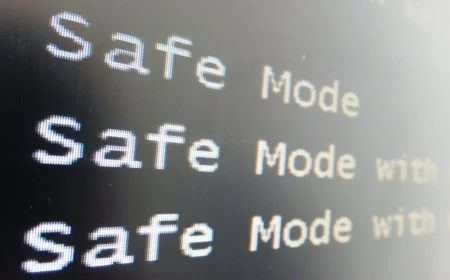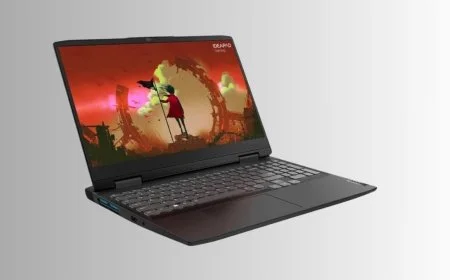Dell Laptop Will Not Power On: Troubleshooting Tips & Solutions
Discover expert tips and solutions to fix your Dell laptop that won't power on. Troubleshoot and resolve the issue with our comprehensive guide.

Is your Dell laptop refusing to power on? Don't worry, we're here to assist you in resolving this issue promptly and effectively with troubleshooting help, quick steps, repair options, and contact dell.
When troubleshooting a Dell laptop that won't power on, several steps can be taken to diagnose and potentially resolve the issue, including running a diagnostic test, checking the plug, and inspecting the wires. First, ensure that the power adapter is securely connected to both the laptop and a working power outlet. Check for any signs of physical damage to the power cord or adapter. Attempt to power on the laptop with the battery removed, as a faulty battery can sometimes cause power issues. If the laptop still does not power on, it may be necessary to perform a hard reset by holding down the power button for 15-20 seconds. Additionally, consulting Dell's support resources or contacting their customer service may provide further assistance in diagnosing and resolving the problem.
For more detailed troubleshooting steps tailored to your specific Dell laptop model, as well as additional tips and advice for maintaining optimal performance, explore our comprehensive guides and articles on laptop troubleshooting and maintenance. We're here to help you get your Dell laptop back up and running smoothly as soon as possible.
Key Takeaways
-
Identify power issues: Check for loose connections, faulty power adapter, or issues with the power button to troubleshoot why your Dell laptop is not powering on.
-
Perform a hard reset: Sometimes a hard reset can resolve power-related issues by clearing any temporary glitches in the system.
-
Run diagnostic tests: Utilize built-in diagnostic tools to identify hardware problems that may be causing the power failure.
-
Troubleshoot the battery: Verify the battery health, connections, and charging status to ensure it is not the source of the problem.
-
Address no POST issues: If your laptop is not showing any signs of power-on self-test (POST), investigate potential hardware failures or BIOS issues.
-
Resolve no boot problems: Troubleshoot boot failures by checking the hard drive, operating system, and BIOS settings for any anomalies.
-
Identifying Power Issues
Symptoms Overview
Key symptoms of a Dell laptop not powering on include absence of LED indicators. Observing power-related signs is crucial.
Cause Analysis
Potential causes behind a Dell laptop's failure to power on involve faulty components like the AC adapter or power button. System board failure could also be responsible.
Resolution Strategies
Troubleshooting steps can effectively address power issues. Restart the laptop following guidelines or contact Dell Technical Support for assistance.
Performing a Hard Reset
Reset Instructions
Power Drain Technique
-
Power draining is a crucial step in troubleshooting power-related issues on a Dell laptop.
-
It involves removing residual electrical charge from the laptop's components.
-
To perform a power drain, disconnect the charger and remove the battery if possible.
BIOS Reset Steps
-
Resetting the BIOS can help in resolving power problems on your Dell laptop.
-
The BIOS reset process involves reverting the settings to their default state.
-
To perform a BIOS reset, shut down the laptop, disconnect all peripherals, and access the BIOS menu.
Running Diagnostic Tests
Hardware Checkup
When diagnosing hardware issues with a Dell laptop that refuses to power on, start by thoroughly checking the physical components. Inspect the AC adapter, cables, and ports for any signs of damage that could be causing the problem. By verifying the functionality of these hardware elements, you can accurately pinpoint the root cause of the issue.
Boot Errors Examination
Analyzing boot errors is crucial in determining why your Dell laptop is not powering on. These errors can significantly impact the overall functionality of the device. By troubleshooting and addressing these boot errors, you can effectively restore power to your laptop.
Battery Troubleshooting
Charge Cycle Check
To ensure your Dell laptop battery functions optimally, monitor its charge cycle regularly. Understanding the importance of maintaining a healthy charge cycle is crucial for battery longevity. Follow specific guidelines to check and optimize the charge cycle effectively.
Connection Verification
Verify all connections and cables to address power-related issues with your Dell laptop. Make sure the connections between the laptop, AC adapter, and power source are secure. Identify any loose or damaged connections that could impact the laptop's power supply.
Addressing No POST Issues
Error Codes Review
Interpret error codes displayed on a Dell laptop facing power problems. Understand the meaning of specific error codes to diagnose and resolve issues effectively. Utilize error code information for troubleshooting purposes.
Perform comprehensive testing of laptop components to pinpoint faulty parts accurately. Test the AC adapter, battery, and power button to ensure functionality. Employ diagnostic tools to evaluate individual component performance.
Resolving No Boot Problems
Safe Mode Start
Initiate a safe mode start to troubleshoot power issues on a Dell laptop. Starting in safe mode allows isolating software problems from hardware issues. To boot into safe mode, restart the laptop and press F8 repeatedly. This action opens the Advanced Boot Options menu.
Understand the benefits of starting the laptop in safe mode for diagnostics. Safe mode loads only essential drivers and services, making it easier to pinpoint the cause of boot failures. It helps identify faulty drivers, malware infections, or recent software changes affecting startup.
Follow steps to boot the laptop into safe mode to address power problems. First, restart the Dell laptop and press F8 until the Advanced Boot Options menu appears. Then, select "Safe Mode" using the arrow keys and press Enter. Once in safe mode, troubleshoot any recent changes or driver issues causing startup failures.
System Repair Options
Explore repair options available for fixing a Dell laptop that won't power on. Dell offers various repair solutions depending on the issue's severity. These include self-repair guides, warranty services, onsite repairs by technicians, or sending the device for professional diagnosis and fixing.
Consider professional repair services provided by Dell for power-related issues. Dell's support includes remote assistance, where technicians diagnose and resolve problems online. In cases requiring physical inspection, Dell provides doorstep repair services or facilitates sending the device to their service centers for comprehensive repairs.
Evaluate different repair solutions based on the severity of the problem. For minor issues like software glitches or driver conflicts, self-repair guides can be effective. However, for hardware failures or complex software issues, seeking professional help from Dell's technicians ensures accurate diagnosis and proper resolution.
Fixing No Video Concerns
External Monitor Test
Perform an external monitor test to diagnose power problems on a Dell laptop. Connect an external monitor to check if the laptop is receiving power effectively. This test helps in identifying any issues with the laptop's display or graphics card.
To conduct the test, connect the external monitor to the laptop using an appropriate cable. Power on both the laptop and the external monitor. If the external monitor displays content while the laptop screen remains black, this indicates a potential issue with the laptop's internal display components.
Graphics Driver Update
Consider updating the graphics driver as a solution for power-related problems on your Dell laptop. Graphics drivers play a crucial role in managing display settings and overall performance. Outdated or corrupt drivers can lead to various issues, including power-related concerns.
Updating the graphics driver involves accessing the device manager, locating the graphics driver, and selecting the option to update it. Ensure you download the latest driver version compatible with your specific Dell laptop model. This process can help resolve video-related issues and improve overall system stability.
Effective Solutions for Power Failure
AC Adapter Inspection
Inspect the AC adapter carefully for any visible signs of damage or malfunction. Check the power output of the adapter to ensure it is functioning correctly. Verify that the connection between the adapter and the laptop is secure.
Consider these steps:
-
Look for frayed wires or bent connectors on the AC adapter.
-
Test the power output using a multimeter to confirm it meets the required voltage.
-
Ensure that the AC adapter's plug fits snugly into both the wall outlet and the laptop's charging port.
Motherboard Analysis
Examine the motherboard closely to identify any potential failures that could be causing power issues. Understand that the motherboard plays a crucial role in initiating and regulating power flow within the laptop.
Additional insights:
-
Inspect for any visible signs of damage, such as burnt areas or bulging capacitors.
-
Check if there are any loose connections or components on the motherboard.
-
Consider seeking professional assistance if motherboard-related solutions are needed to fix power problems.
Advanced Troubleshooting Techniques
Firmware Update
Updating the firmware of your Dell laptop can address power-related issues effectively. Firmware updates play a crucial role in enhancing system performance by fixing bugs and improving compatibility. To update the firmware, visit the Dell website, locate the latest firmware version for your laptop model, download it, and follow the installation instructions provided. This process can help troubleshoot various power problems that your laptop may be experiencing.
Cooling System Check
Checking the cooling system of your laptop is essential to identify malfunctions affecting power. Proper ventilation and cooling are necessary to prevent overheating issues that can lead to power failures. Make sure to regularly clean the cooling system, including fans and vents, to maintain optimal performance and power efficiency. Overheating can cause hardware damage and reduce the lifespan of your device.
Preventive Measures and Maintenance Tips
Regular Updates
Stay informed about regular updates and maintenance tasks for your Dell laptop. Regular updates are crucial for optimal performance and can help prevent power issues. Understanding the significance of software and driver updates is essential in maintaining your laptop's functionality. By following a routine update schedule, you can ensure that your device runs smoothly without any power-related disruptions.
Cleaning Guidelines
Follow cleaning guidelines to maintain the overall health of your Dell laptop. Regular cleaning is key to preventing dust buildup, which can lead to overheating and power failures. Utilize recommended cleaning tools and methods to effectively remove dust and debris from your laptop's components. Proper maintenance through regular cleaning can significantly extend the lifespan of your device.
Final Remarks
You now possess a comprehensive guide to troubleshooting and resolving power issues with your Dell laptop. By identifying common problems, performing resets, running diagnostics, and implementing effective solutions, you have the tools to address various issues that may prevent your laptop from powering on. Remember to apply preventive measures and maintenance tips regularly to ensure optimal performance and longevity of your device.
Take charge of your Dell laptop's power concerns today by utilizing the knowledge and techniques you've acquired. Stay proactive in maintaining your device to prevent future issues. Your diligence will not only keep your laptop running smoothly but also extend its lifespan. Keep exploring new troubleshooting methods and share your experiences with others to help them overcome similar challenges.
Frequently Asked Questions
How can I identify power issues with my Dell laptop?
To identify power issues with your Dell laptop:
-
Check if the power adapter is properly connected.
-
Look for any visible signs of damage on the power cord.
-
Try using a different power outlet to rule out electrical issues.
What should I do if my Dell laptop will not power on?
If your Dell laptop will not power on:
-
Perform a hard reset by removing the battery and unplugging the AC adapter, then press and hold the power button for 30 seconds.
-
Check for any error messages or beeping sounds that could indicate specific issues.
How do I troubleshoot battery problems on my Dell laptop?
To troubleshoot battery problems on your Dell laptop:
-
Ensure the battery is properly seated in its compartment.
-
Try charging the laptop using a different power source.
-
Run diagnostic tests to check the battery health status.
What are common reasons for no POST issues with a Dell laptop?
Common reasons for no POST (Power-On Self Test) issues with a Dell laptop include:
-
Faulty hardware components such as RAM or motherboard.
-
Incorrect BIOS settings or outdated firmware.
-
Power supply problems or overheating issues.
How can I prevent power failure in my Dell laptop?
To prevent power failure in your Dell laptop:
-
Avoid using incompatible chargers or third-party accessories.
-
Keep the laptop clean from dust and debris that can obstruct ventilation.
-
Regularly update drivers and firmware to ensure optimal performance.
What's Your Reaction?







































![MacBook Pro M5: All the features and specs you need to know [LEAKS REVEALED]](https://tomsreviewbox.com/uploads/images/202502/image_430x256_67bd6d7cd7562.jpg)




























